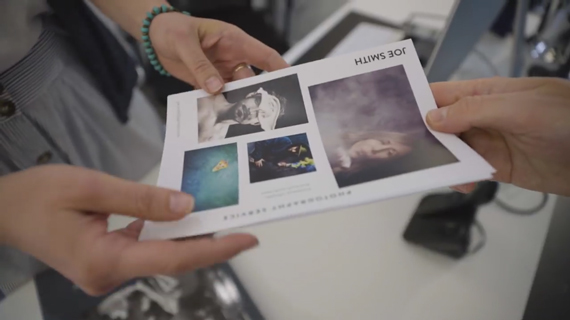Photography is a hobby for many, but only a handful can make the cut and adopt it as a career. Photography is a very competitive industry, and it requires a lot of persistence to succeed. The COOPH team has compiled a list of seven steps to become a professional photographer:
1. Find Your Specialty
If you find yourself photographing a variety of subjects, you may want to pause and decide what genre of photography would you like to pursue. Or if you are just starting out, you may want to experiment with different genres and pursue the one which you find most interesting or the one in which you find yourself delivering excellent results. Once you have your mind set, work to develop additional expertise in the field so as to add value to your work. If you want to gain exposure to the various genres of photography, COOPH recommends that you work as an assistant for a while.
2. Get the Right Tools
After finalizing on the genre you want to specialize in, the next step is to get the right tools for the trade. There is no need to own all the latest camera bodies and lenses, but it’s important that you at least have the most essential ones. For instance, an 85mm lens is a must if you are going into portrait photography. Similarly, if wildlife is your thing then telephoto lenses are a must. Also don’t forget about tripods, lighting equipment, data storage, and backup solutions.
3. Build a Portfolio
When you’re in the market to get a client, a portfolio is a photographer’s primary tool. Social media is a quick and easy way to share your work with clients, but having a website has a more personalized and professional touch. While building a portfolio, look for providers who have a user friendly and easy to use interface.

4. Find the Right Clients
Now that you have your portfolio in place, you’re all set to seek clients. Do your research and identify businesses that can benefit from your work. For instance, if you’re a portrait photographer, you may want to keep an eye out for businesses that may need corporate head shots. COOPH also suggest that you use the classic “foot in the door” marketing technique by providing them one session free of charge and charging them when they re-book. However, be confident on what price you want to charge the next time.
5. Understand the Business
Once you start getting clients and your business is up and running, it’s time to keep track of the operations. Some important things to consider include the following:
- Keeping a track of income and expenditure
- Creating standard templates for quotations and invoices
- Requesting corporate clients for purchase orders
- Complying with the tax requirements of the local authorities
- Having a standard format for contracts which can be easily adapted as per project requirements
- Getting written photo release permissions from models and locations
- Insuring your gear

6. Refine Your Workflow
A key factor that differentiates professionals from rookies is workflow. Professionals cannot risk their reputation so they need to be well prepared for the project on hand. Be wary of minor things like having fully charged batteries, sufficient and formatted memory cards, or packing the right lenses. Also, learn to batch-edit photos. This helps in making the editing work much faster and getting consistent results. Finally, have a proper storage and backup solution and also learn to catalog your photos using software like Lightroom or Capture One to efficiently locate the photos in case of need in the future.
7. Promote Your Work
While word-of-mouth is the most effective marketing tool, it may not be able to sufficiently draw in clients to help your business grow in volumes. It is thus essential to promote your work. The cheapest way to promote oneself today is via social media. Use engaging content to make your work visible to a larger audience. Hand out small prints to past and potential clients. Exhibitions can be a great place for networking and building awareness. For this, you can reach out to galleries.

Like any businesses, getting into photography professionally also requires continuous hard work. Don’t be taken aback by the initial turbulence that you may face. As COOPH has put it beautifully,
“Never lose sight of why you started shooting. This may one day be more important than you’d expect.”
Go to full article: How to Become a Professional Photographer: 7 Key Steps
What are your thoughts on this article? Join the discussion on Facebook
PictureCorrect subscribers can also learn more today with our #1 bestseller: The Photography Tutorial eBook
The post How to Become a Professional Photographer: 7 Key Steps appeared first on PictureCorrect.